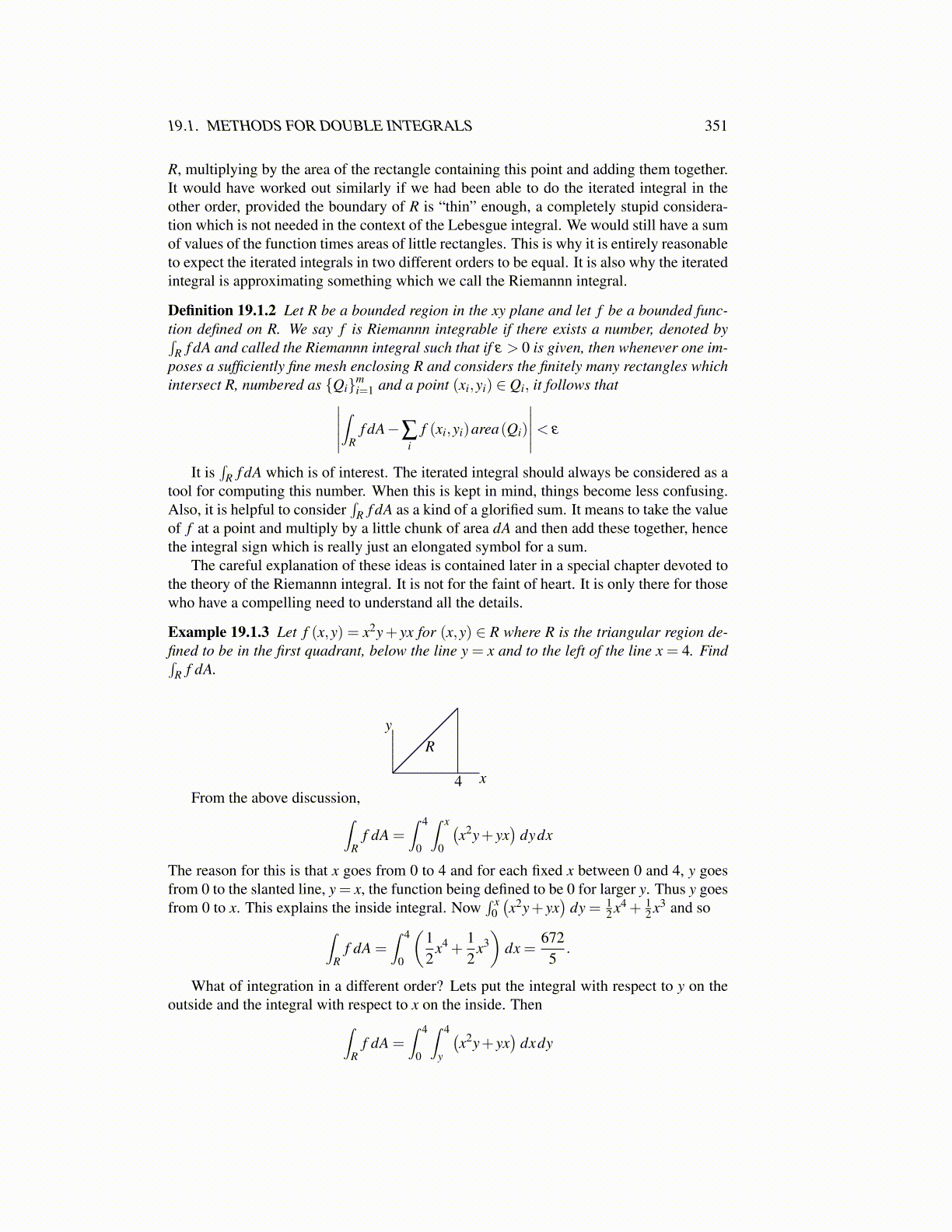
19.1. METHODS FOR DOUBLE INTEGRALS 351
R, multiplying by the area of the rectangle containing this point and adding them together.It would have worked out similarly if we had been able to do the iterated integral in theother order, provided the boundary of R is “thin” enough, a completely stupid considera-tion which is not needed in the context of the Lebesgue integral. We would still have a sumof values of the function times areas of little rectangles. This is why it is entirely reasonableto expect the iterated integrals in two different orders to be equal. It is also why the iteratedintegral is approximating something which we call the Riemannn integral.
Definition 19.1.2 Let R be a bounded region in the xy plane and let f be a bounded func-tion defined on R. We say f is Riemannn integrable if there exists a number, denoted by∫
R f dA and called the Riemannn integral such that if ε > 0 is given, then whenever one im-poses a sufficiently fine mesh enclosing R and considers the finitely many rectangles whichintersect R, numbered as {Qi}m
i=1 and a point (xi,yi) ∈ Qi, it follows that∣∣∣∣∣∫
Rf dA−∑
if (xi,yi)area(Qi)
∣∣∣∣∣< ε
It is∫
R f dA which is of interest. The iterated integral should always be considered as atool for computing this number. When this is kept in mind, things become less confusing.Also, it is helpful to consider
∫R f dA as a kind of a glorified sum. It means to take the value
of f at a point and multiply by a little chunk of area dA and then add these together, hencethe integral sign which is really just an elongated symbol for a sum.
The careful explanation of these ideas is contained later in a special chapter devoted tothe theory of the Riemannn integral. It is not for the faint of heart. It is only there for thosewho have a compelling need to understand all the details.
Example 19.1.3 Let f (x,y) = x2y+ yx for (x,y) ∈ R where R is the triangular region de-fined to be in the first quadrant, below the line y = x and to the left of the line x = 4. Find∫
R f dA.
x
y
4
R
From the above discussion,∫R
f dA =∫ 4
0
∫ x
0
(x2y+ yx
)dydx
The reason for this is that x goes from 0 to 4 and for each fixed x between 0 and 4, y goesfrom 0 to the slanted line, y = x, the function being defined to be 0 for larger y. Thus y goesfrom 0 to x. This explains the inside integral. Now
∫ x0(x2y+ yx
)dy = 1
2 x4 + 12 x3 and so∫
Rf dA =
∫ 4
0
(12
x4 +12
x3)
dx =672
5.
What of integration in a different order? Lets put the integral with respect to y on theoutside and the integral with respect to x on the inside. Then∫
Rf dA =
∫ 4
0
∫ 4
y
(x2y+ yx
)dxdy